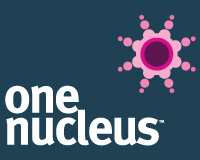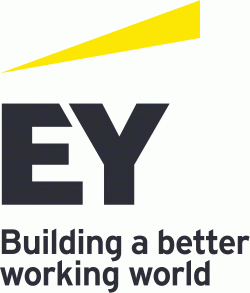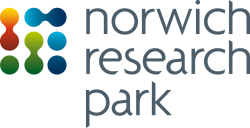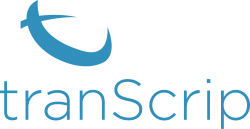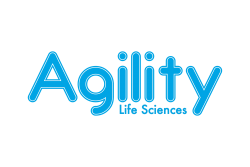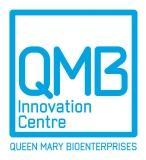Report from the Genesis Fringe Event held on 6 December 2023 by Tony Jones
For the past decade, a number of satellite sessions have been held across London and online as part of the build up to the annual Genesis Conference which has been a key fixture in the life science calendar for over twenty years. With sessions that vary in size, content, topic focus and exclusivity, the Genesis Fringe, which is described further in the Genesis Review/One Nucleus at BIO-Europe Spring 2023 publication launched in March, forms an informal London Life Science Week. The Fringe affords participants access to a dynamic week where they can tailor their own agenda through which to connect with both Genesis attendees and non-attendees to maximise their return.
Being ready for due diligence
 Below you will find a summary of the Fringe session, hosted by Mathys & Squire entitled ‘The Good Housekeeping Guide to Dealmaking’. A capacity turnout to discuss the best steps to take that maximise the value, security, and deal conversion chances arising from leading R&D.
Below you will find a summary of the Fringe session, hosted by Mathys & Squire entitled ‘The Good Housekeeping Guide to Dealmaking’. A capacity turnout to discuss the best steps to take that maximise the value, security, and deal conversion chances arising from leading R&D.
Context
The translation of excellent science into better medicines and health technologies can be a complex, multi-partner journey. The passing of the baton between inventors, companies, and their investors relies on robust dealmaking processes that are underpinned by each stakeholder’s due diligence. Barriers such as inaccurate or incomplete data, slow responses, and a lack of clarity all contribute to a loss of confidence and trust from the partner in any deal. The session discussed what researchers, tech transfer offices, start-up companies, and early-stage companies should be doing to ensure their data room has all the answers to key questions that arise in due diligence.
Keynote Speakers
Craig Titmus & Martin MacLean, Mathys & Squire
Judit Molnar, tranScrip (now VP at BenevolentAI)
Ralph Hughes & Kyriakos Tzafestas, Director, PharmaVentures
IP ownership and why you must get it right
 Reinforcing what perhaps is often taken for granted in that intellectual property (IP) is the key asset of any business in the sector, yet sometimes clarity on ownership and the paper trails to demonstrate that in due diligence is overlooked until it really matters. Understanding the difference between the ‘inventor(s)’ and the ‘owner(s)’ of the IP is imperative, given that getting it wrong can lead to legal challenges that invalidate the patent or later claims by omitted owners to a share of any profits. The inventors are the people who devised the actual invention being claimed, conceiving the idea, overcame technical challenges to key data, and/or went above and beyond simply conducting experiments or analysis. They may not be the owners, and remember, inventorship is very different from authorship on a scientific paper.
Reinforcing what perhaps is often taken for granted in that intellectual property (IP) is the key asset of any business in the sector, yet sometimes clarity on ownership and the paper trails to demonstrate that in due diligence is overlooked until it really matters. Understanding the difference between the ‘inventor(s)’ and the ‘owner(s)’ of the IP is imperative, given that getting it wrong can lead to legal challenges that invalidate the patent or later claims by omitted owners to a share of any profits. The inventors are the people who devised the actual invention being claimed, conceiving the idea, overcame technical challenges to key data, and/or went above and beyond simply conducting experiments or analysis. They may not be the owners, and remember, inventorship is very different from authorship on a scientific paper.
Whilst the inventor is the default owner, that ownership typically passes to their employer, where their employment is in the UK, and the nature of their work means they can be expected to make inventions or they are a very senior employee. Co-ownership may exist if there are multiple inventors. Without agreements to the contrary, it will be assumed that ownership is equal and that each owner is entitled to work the patented invention without infringing. It should be noted that co-owner rights to a license can differ by jurisdiction.
Good practice for a company is to ensure their employment contracts automatically assign inventions to the employer. If there is any doubt, a confirmatory assignment should be executed. The situation, as one may expect, is often more complicated. For instance, it is not always clear whether the inventor is employed by the company filing the patent application, it could be via a subsidiary for example. Furthermore, care should be taken when engaging consultants or sub-contractors. If the research leading to the invention was conducted by an academic institute, then this can be complicated in terms of employment status, grant body T&Cs, and other competing rights. IP arising from a collaboration may be subject to additional contractual terms over and above employment status.
Creating effective regulatory dossiers in early development
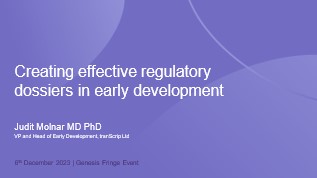 Considering this aspect from the perspective of any company is a key exercise. From the perspective of an SME where project portfolios are narrow, cash reserves are limited, and clinical trial cohorts increasing in size at each trial phase, the risks associated with discovery and development are enormous. Thus, identifying and focussing R&D on the areas where risk can be reduced in a project is a key goal when seeking to make the value proposition more attractive to Pharma partners and/or investors.
Considering this aspect from the perspective of any company is a key exercise. From the perspective of an SME where project portfolios are narrow, cash reserves are limited, and clinical trial cohorts increasing in size at each trial phase, the risks associated with discovery and development are enormous. Thus, identifying and focussing R&D on the areas where risk can be reduced in a project is a key goal when seeking to make the value proposition more attractive to Pharma partners and/or investors.
Starting with the end in mind is a well-used piece of advice in many scenarios. In the context of drug discovery and development, the Target Product Profile serves as the ‘North Star’. It must be a living document where the company considers how best to align the key timing, study design, and route to market aspects of their project to maximise risk reduction as a business proposition. Pharma companies have repeatedly used retrospective analysis of their own R&D efforts to identify optimal strategies and productivity in R&D. Pfizer for example, analysing 44 programmes undertaken between 2005-2009, identified 43% failed at Phase II due to a lack of efficacy. This led to their ‘Three Pillars of Survival’ for any experimental new molecule as being (i) Exposure at the site of action; (ii) Target binding; and (iii) Expression of functional pharmacological activity. Analysis showed that if each programme has been judged against these metrics, the probability of success would have increased. A not dissimilar retrospective internal analysis by AstraZeneca in 2010 led to their ‘5R Framework’, which saw them increase the proportion of their success rate from preclinical investigation to completion of Phase III by around 5-fold. Maybe not these specific frameworks, but a similar framework, being deployed provides an effective means to address preclinical gaps and inform early phase trial design. Moreover, any potential Pharma partner would be expected to apply the same discipline when assessing an external opportunity.
In terms of the areas in which to focus to assess the likelihood of success, characteristics such as evidence of a clear link between the therapeutic target and the pathogenic path of the disease are key. This can be via human computational data, in vitro/ex vivo data with drug, animal in vivo models, and ultimately human clinical data. Complementary considerations will include whether there is a measurable clinical assay of target engagement by the drug; are suitable biomarkers for primary pharmacology and proof of mechanism available; is there a robust mechanism for dose selection; and whether there is a clear understanding of unmet need from the patient and payer perspectives.
To enhance the evaluations above for effective early planning ahead of seeking investment, partnering deals, or indeed to go it alone, consideration of the key risks in early clinical trials and how these can be mitigated must be paramount. These could be summarised as follows:
- Trial participant safety – all potential risks must be addressed and reflected in the trial protocol, along with the risk mitigation strategies being proposed.
- Risk/benefit ratio – based on a combination of potential safety liability, modelled therapeutic index, pre-clinical toxicity and limitations, potential benefit, and how the clinical trials will be monitored for safety and efficacy.
- QMS – ensure a comprehensive and robust Quality Management System is operated across the company that includes covering quality policies and objectives, responsibilities for achieving the quality policies and objectives, processes and procedures, and risk management.
No such session would be complete without presenting the regulatory requirements that need to be met to commence a clinical trial. This session was no exception. Every element cannot be covered here, but the key points highlighted were as follows:
- It will be necessary to file an IND (US) and a CTA (EU) which include sufficient evidence that there is enough research to demonstrate the drug is safe and of potential benefit to patients.
- Non-clinical requirements must have been considered. Be sure to follow the guidance set out in the ICH M3(R2) documentation (different for cell & gene therapy products)
- The above should be adequate to characterise potential adverse effects that might occur in the trial.
EU Clinical Trial Authorisation Application (CTAA) now must be submitted via CTIS electronically and consists of two parts: Part I is the scientific part that is common to all countries and Part II which is the local/national ethical review.
 Evidencing your proposed valuation
Evidencing your proposed valuation
The pivotal point of securing the deal, provided the technical and IP ownership matters are all in order, will undoubtedly come down to the respective negotiating teams agreeing on a valuation they feel they can sell to their own stakeholders.
Unlike the innovative SME originator of a new drug development programme, Pharma companies conduct a multitude of due diligence exercises each year on potential assets yet only transact over a handful. This gives an indication of the thoroughness and also reflects, much like investors, that there are more reasons to say no than say yes to a deal. For this reason, it is vital that the SME is ready for due diligence when it comes along. Timing is key since the BD team seeking the deal is often against the clock, and each opportunity needs to fit within their window of bandwidth. Equally, availability of solid data that allows the rapid and robust modelling of an asset of interest is key. Preceding that stage will, of course, have been the initial screening of whether the SME team has the subject matter expertise to give confidence and that there is access to key external perspectives, such as payers.
The initial market expectation is set at the deal stage, so it is unsurprising that deal negotiation includes the respective assessments of the likelihood of market success by both parties and is a good starting point. It is often the case that lack of commercial readiness, ie market access, differentiation, and customer understanding, is the main reason drugs fail to meet market expectations. The impact on the deal of getting these assumptions incorrect can include the licensor giving the asset a low valuation, a lower development priority, or the asset being divested. All of which have a negative impact on the originator company via the deal structure.
In coming to a proposed asset valuation from which to commence a deal negotiation, there are some key considerations required for the modelling that include:
- Knowledge of the therapy area(s) and its commercial dynamics.
- Input from all departments (in-house or advisers) eg medical, clinical development, IP, manufacturing, etc.
- Update the model with the latest data and assumptions.
- Understand the uniqueness of the asset and what that means in commercial value terms.
- Avoid stretching assumptions to meet a desired value.
- Each assumption in the model should be validated with defensible, well-documented analysis that is researched and specific to your asset rather than publicised general industry figures. Validate your valuation using multiple modelling techniques, where possible.
- Ensure full records of any assumptions are available from already completed studies or meetings with regulators looking forward, for example.
Compelling in any such negotiations are robustly generated pricing assumptions, an understanding of likely restrictions dependent on potential trial outcomes, and comparator data. It is suggested that thoroughly understanding the payer landscape is achieved, using an approach such as the BEACON methodology. Test the proposed pricing with both US and EU payers and/or payer experts. Cost-Offset or Economically Justifiable Price (EJP) modelling provides transparency in assumed price setting that payers may endorse globally. Each of these approaches is valid on its own, but validating them against each other is a highly recommended strategy for robustness.
Conducting the research and evidencing how the asset can be positioned in the market is a solid base from which to build a defensible valuation. Both qualitative and quantitative market research on influencers within the target market can afford effective comparator information, enabling the asset’s differentiated characteristics to be used in value assumptions. First steps here are to identify the Key Opinion Leaders in each target market and devising a well-structured questionnaire that covers elements such as unmet need, market size, and level of acceptance of the key value drivers of the asset. Distilling the key findings allows adjustment of the valuation model, and making the primary data available in the data room supports the findings reported. Benchmarking the proposed valuation against similar assets can be a powerful tool, particularly since it is based on real-world data from already executed deals. Care should be taken when benchmarking, however, to fully consider how comparable the assets are in terms of variables such as unmet need being addressed, development path, and geographic rights granted in the deal.
Summary
It would be unrealistic to feel that all the shared insights and discussion points from the extremely gripping session could be captured in a simple report of the meeting. Rather, this article seeks to share some key points that may trigger further investigation by the reader as they build their dealmaking plan. The full slide decks from the meeting are available for further information, as are the contact details of the expert presenters for further discussion if required one-to-one, and here are some concluding tips that were shared:
Measures to take – IP issues
- Laboratory notebooks – current, detailed, dated, and signed.
- Isolate recording of collaborative work.
Measures to take – Regulatory Issues
- Plan, plan, and plan.
- Do not leave it too late to start.
- Talk to regulators early.
- Ensure GLP status for key non-clinical studies.
- If relevant, use the language verbatim from the Clinical Trials Coordination Group’s recommendations on contraception.
- Work with regulatory colleagues.
- Plan, plan, and plan.
Measures to take – Asset Valuation
- Triangulation – evidence the conclusions with more than one approach.
- Referencing – document and reference every conclusion.
- Diligence – Conduct the partner’s due diligence on yourself first to identify gaps.
- Homework – ensure you are on equal footing in the negotiation.
Thanks
One Nucleus would like to express its gratitude to Mathys & Squire for hosting the above session as part of the Genesis Fringe 2023, along with thanks to the expert presenters for their thought-provoking presentations that stimulated a lot of engaging debate among the participants.
